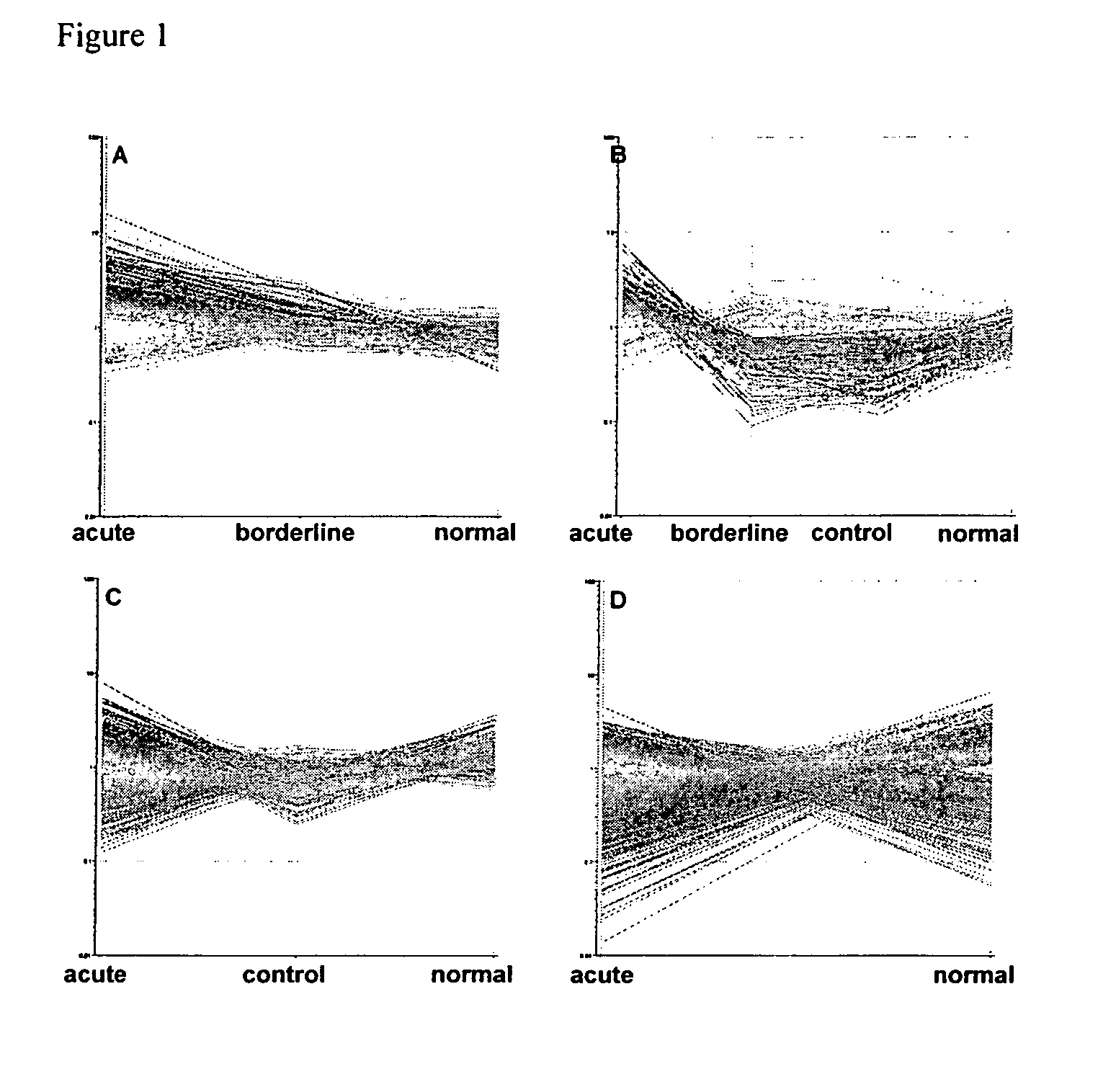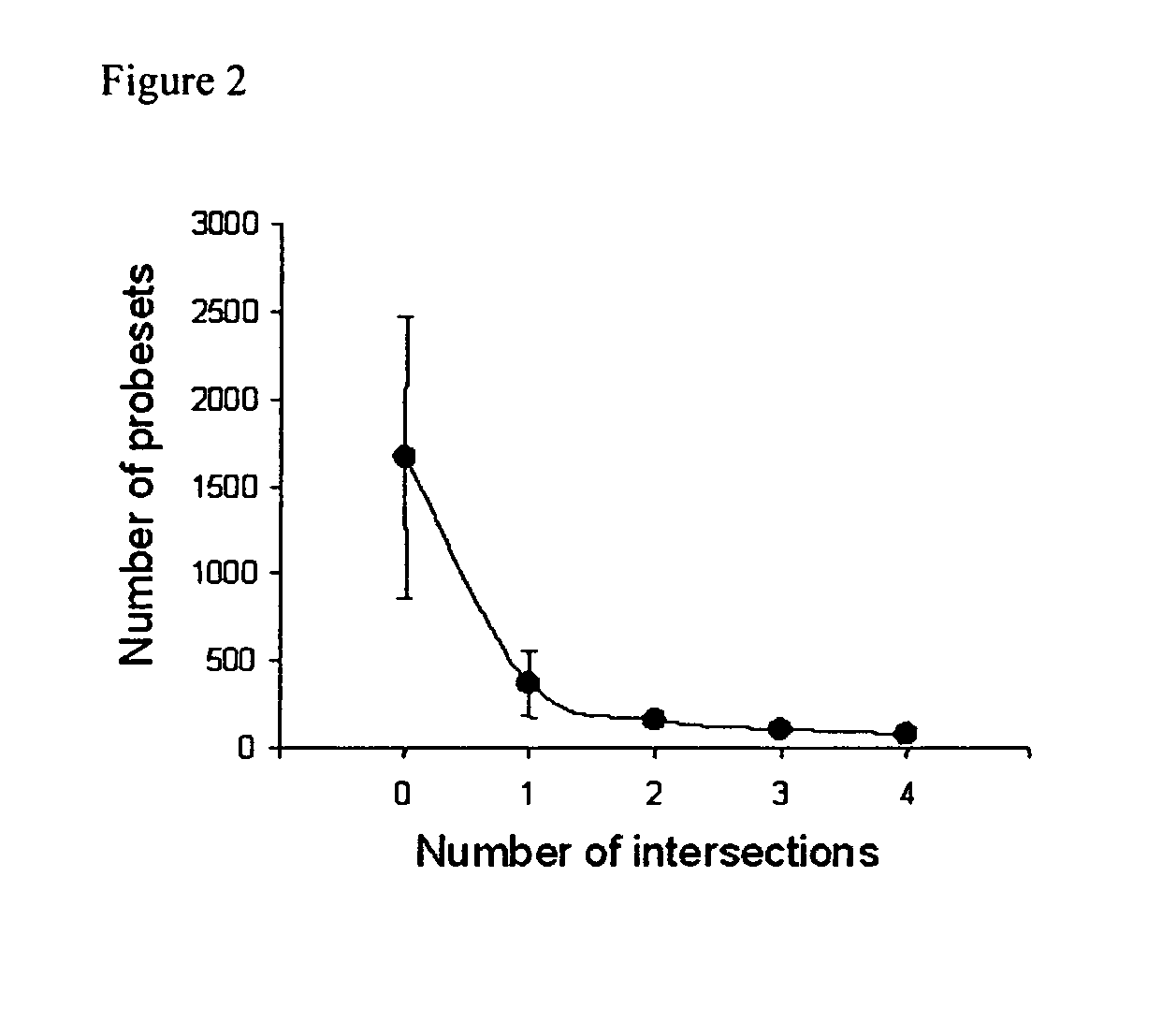Methods and compositions for assessing acute rejection
a technology of acute rejection and composition, applied in the direction of drug composition, antibody medical ingredients, instruments, etc., can solve the problems of acute rejection remaining a common and serious problem, current monitoring and diagnostic modalities may not be suited to the diagnosis of acute rejection, and risk factors for chronic rejection, so as to improve disease classification, minimize and personalize immunosuppression, and accurately detect transplant rejection
- Summary
- Abstract
- Description
- Claims
- Application Information
AI Technical Summary
Benefits of technology
Problems solved by technology
Method used
Image
Examples
example 1
Identifying a Gene Expression Signature Indicative of Acute Rejection
2.1 Data Collection
[0158]Two microarray datasets were downloaded from Gene Expression Omnibus (GEO). One analysis performed on a customized two-channel cDNA microarray platform (Lymphochip) through accession number GDS365 (Dataset D) (Stanford et al. New England Journal of Medicine 2003; 349(2):125-138). This study, published in 2003, is considered as a reference in gene expression profiling of kidney transplants. Another analysis, performed on the Affymetrics U95A version 2 platform is available through the accession number GDS724 (Dataset A) (Flechner et al. American Journal of Transplantation 2004; 4(9): 1475-1489). These two public datasets were compared with three internal analyses, including dataset C and the dataset B, both performed on Affymetrix HG-U 133 Plus2 chips. In addition to these human studies, the meta-analysis study was performed on a non human primate (NHP) (dataset E), (Novartis RDS no: RD-2003...
PUM
| Property | Measurement | Unit |
|---|---|---|
| Gene expression profile | aaaaa | aaaaa |
Abstract
Description
Claims
Application Information
 Login to View More
Login to View More - R&D
- Intellectual Property
- Life Sciences
- Materials
- Tech Scout
- Unparalleled Data Quality
- Higher Quality Content
- 60% Fewer Hallucinations
Browse by: Latest US Patents, China's latest patents, Technical Efficacy Thesaurus, Application Domain, Technology Topic, Popular Technical Reports.
© 2025 PatSnap. All rights reserved.Legal|Privacy policy|Modern Slavery Act Transparency Statement|Sitemap|About US| Contact US: help@patsnap.com



